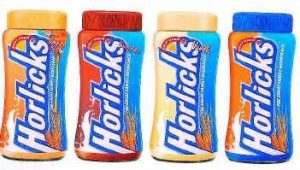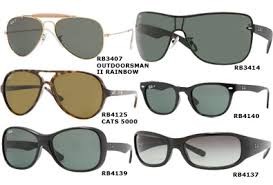How to be seen and heard in crammed markets?
Importance of product positioning
 There are a variety of definitions of product positioning, possibly the most common is: identifying and attempting to occupy a market niche for a brand, product or service utilizing accurate marketing mix strategy i.e. product, price, promotion and place (distribution).
There are a variety of definitions of product positioning, possibly the most common is: identifying and attempting to occupy a market niche for a brand, product or service utilizing accurate marketing mix strategy i.e. product, price, promotion and place (distribution).
Positioning is an essential part of launching a product in the market. Positioning simply revolves around image of the product and its company. It creates a position for self in the minds of the customers and hence the term “positioning” is used. The fashion in which a product portrays its utility and its benefits in the minds of customers makes a difference in its standing in the market. Positioning strategy can change the perception of the product. A product stands out amongst an array of products on a shelf.
Horlicks: it’s one of the leading malted milk drinks. Do you know that Horlicks came to India with British Army during end of World War-I; Indian soldiers of British Indian Army brought it back with them while returning home. It was given to the soldiers as a diet supplement. Punjab, Bengal and Madras Presidencies became early adopters of Horlicks and lot of well-to-do Indians adopted it as a family drink from early 1930s to 1950s. It was invented in 1873 by James Horlicks, the brand has been available in India for almost above 85 years.
Glaxo Smithkline (GSK) has changed the positioning strategy of Horlicks as per the changing times. From being a drink taken only during convalescence the brand has repositioned itself since the seventies as a ‘great family nourished’ drink. It became a sort of status symbol in upper middle class and rich Indian families. India, even today is by and far, the biggest market for Horlicks, here it has traditionally been marketed as ‘The Great Family Nourisher’.
 The Indian formulation for Horlicks is slightly different than in most other countries; in India it is manufactured from cow milk whereas in other countries it is manufactured from buffalo milk. Horlicks has added many new flavors in India such as vanilla, toffee, chocolate, honey, and elaichi. The current line-up of flavors includes original (malt), chocolate and elaichi and the latest offering is Kesar Badaam.
The Indian formulation for Horlicks is slightly different than in most other countries; in India it is manufactured from cow milk whereas in other countries it is manufactured from buffalo milk. Horlicks has added many new flavors in India such as vanilla, toffee, chocolate, honey, and elaichi. The current line-up of flavors includes original (malt), chocolate and elaichi and the latest offering is Kesar Badaam.
According to an Economic Times Survey of 2004 Horlicks is the leading health food drink in India and as the “Most Trusted Drink Brands.” It enjoys more than half of the health food drink market. GSK has used brand rejuvenation after regular intervals by giving it a different packaging, product alteration in terms of flavors, new advertising tactics, a sturdy distribution and comparable pricing. Horlicks is going strong in India in spite of tough competition from Boost, Complan, Bournvita, Viva and Maltova.
Horlicks jars occupy a visible position in many Indian and Bangadeshi households. The former sturdy glass jars are used to stalk grains, massalas, and sugar even today. They are so strong that they have lasted for over 2-3 decades in some households. Isn’t this one of the strengths of brand positioning? I recall this in my childhood women would buy Horlicks every month for two reasons one for nourishing their children and two for decoratively storing their shelves. Successful segmenting, a focus on the target markets, innovating the product regularly as per changing taste of consumers, tinkering the product packaging design and shape has helped Horlicks’s positioning in the market for over eight decades. Most notably, its consistency in maintaining product quality and strengthening of essential nutrients has won over the trust of generations of mothers. The brand gives guarantee of nutrition and growth that all mothers seek in for the kids. With its superior taste and constancy in quality it has become the adorable brand among kids and mothers.
Positioning matters in how a product is defined by the marketer, what it does – its benefits, what it means and its effects in short, it must inspire the consumers. For a good positioning inventive and stimulating marketing communication is a must. Of course, the positioning involves product packaging and design aesthetics, pricing, performance, references and the media vehicles used for its promotion. Positioning therefore exists in the customer’s minds. People do not like to change a product if it matches their taste and comforts therefore, positioning must exhibit product’s relevance in terms of its usage, benefit and its credibility.
 Ray Ban sunglasses have been reining the market for ages. Ray Ban had created its trade mark convincingly; its craft, its usage, its design and the price – it’s positioning is based on quality consistency and craftsmanship. It was the first brand of goggles which introduced the U.V and the post-red secure glasses in all the designs and gold plated frame in aviation segment. This added to its firm positioning. Post World War I the aviation sector saw a boom. The 1920s was a decade of remarkable advances. As a result of which air traffic grew tremendously. With the development of new airplanes that could fly higher and higher came altitude-related problems. Pilots were suffering from headaches and nausea because of glare and the great distances that they had to navigate. In 1929, General MacCready asked Ray-Ban for a new type of air force eyewear that would protect pilots from glare at high altitudes while at the same time ensuring a clear field of vision. The company took up the challenge and succeeded in developing a new pair of glasses with lenses that could block out a high proportion of visible light. This marked the birth of Ray-Ban’s first, green-lens ANTI GLARE eyewear. In 1936 the first model went on for sale to general public. They were featured in a plastic frame with the classic Aviator shape.
Ray Ban sunglasses have been reining the market for ages. Ray Ban had created its trade mark convincingly; its craft, its usage, its design and the price – it’s positioning is based on quality consistency and craftsmanship. It was the first brand of goggles which introduced the U.V and the post-red secure glasses in all the designs and gold plated frame in aviation segment. This added to its firm positioning. Post World War I the aviation sector saw a boom. The 1920s was a decade of remarkable advances. As a result of which air traffic grew tremendously. With the development of new airplanes that could fly higher and higher came altitude-related problems. Pilots were suffering from headaches and nausea because of glare and the great distances that they had to navigate. In 1929, General MacCready asked Ray-Ban for a new type of air force eyewear that would protect pilots from glare at high altitudes while at the same time ensuring a clear field of vision. The company took up the challenge and succeeded in developing a new pair of glasses with lenses that could block out a high proportion of visible light. This marked the birth of Ray-Ban’s first, green-lens ANTI GLARE eyewear. In 1936 the first model went on for sale to general public. They were featured in a plastic frame with the classic Aviator shape.
The Ray Ban glasses come in various shapes and sizes; perhaps that’s why you see them protecting most eyes in the world. The product offers good quality, warranty and after sales service and hence people trust its credibility. You will see hoards of people using them while rock climbing, on beaches, while jogging or walking. Wearing Ray Ban glasses has become fashion trend. The elegant yet conventional glasses are sold all over the world. Its whole body styling defines the design and style contention into a conventional manner. Ray Ban sale comprehends the luxury and royalty; it adds to the dignity of the user. It comes in five variants of color shades. It offers feminine and elegant glasses for women. Its classic appeal with delicate frames, great colours and profiles are awesome. They are so elegant, that females can simply flaunt them. Ray Ban stands tall while giving tough fight to Maui Jim, Versace, Oakley, Persol, Tom Ford, Burberry, Prada, Revo and many more brands.
 Product quality is the major aspect in positioning of a product. It consists of intensity and consistency of the quality, how it is perceived by the customers and the appeal. The features both physical and intrinsic characteristics contribute to its benefits. The design of the product adds to its appeal.
Product quality is the major aspect in positioning of a product. It consists of intensity and consistency of the quality, how it is perceived by the customers and the appeal. The features both physical and intrinsic characteristics contribute to its benefits. The design of the product adds to its appeal.
The brand name, logo, needs serious thinking by the marketer. The brand name contributes to positioning exercise. The power of the brand name cannot be underestimated.
Packaging helps handling of the product. For example in the example of Horlicks; its glass jar helped the positioning of it. People got so used to using the jar for storing household items that women would insist on buying Horlicks for collecting the jars.
Labeling incorporates the written information about the product and usually is printed on an adhesive sticker. Label is an identity of a product. It helps business promote their product and catch people’s attention. It is beneficial to consumers as it gives information about ingredients, price, manufacturing date, which help customers distinguish goods from one another.
The elements listed above add to the competitive advantages of the product; good and consistent quality, features, design, packaging, labeling and after sales service help in strategic positioning of a product. The positioning needs to be done by placing it within an obtainable category.
Before I finish, positioning idea must be clear in terms of both target market and degree of difference in advantages suitable to different segments. The target market should be clearly demarcated and identifiable in terms of demographic or geographic parameters, or a combination of both. When marketers cannot resist offering the product besides targeted market, the clarity of the communication becomes blurred; the value proposition of the products narrows down. This situation can create threat to the product’s existence in a market. Clearness, Constancy, Credibility, and Competitiveness – all 4 Cs are the inputs to successful positioning.













































